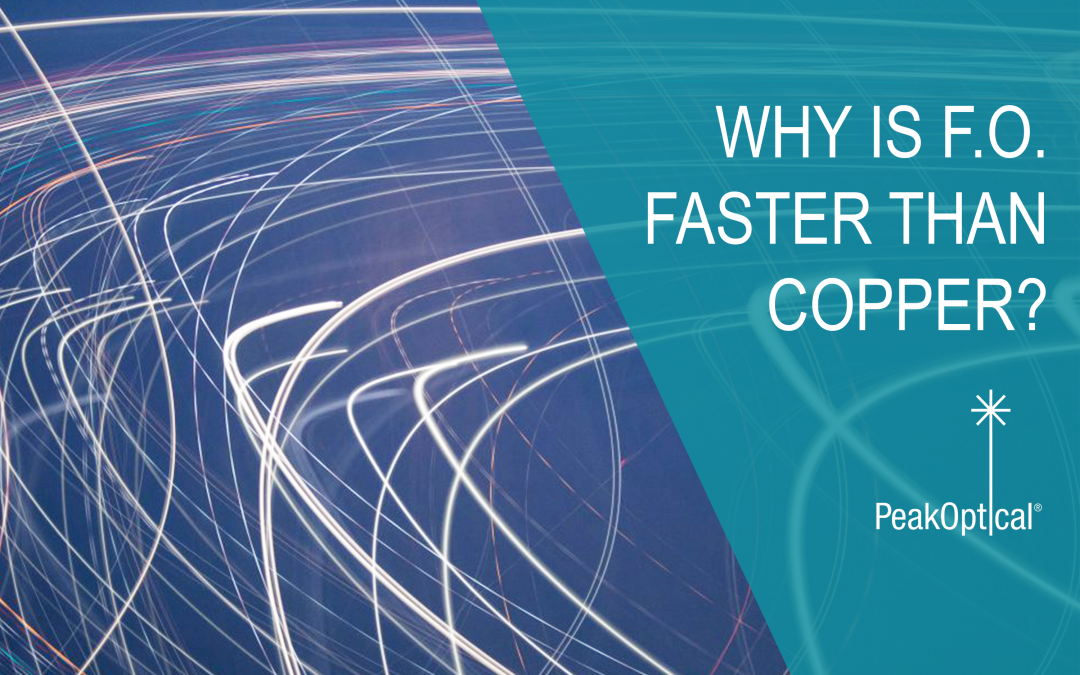It is a known fact that information travels faster down fiber optic cable than in copper. But did you ever asked WHY?
Fiber optic technology sends pulses of light and data is carried along strands of glass or plastic, while the copper wires use electrical currents.
In both cases, the information is encoded through changes of energy. In copper’s case, the changes are happening in the electromagnetic field, in its intensity, and in the phase when the wave is being sent down a wire.
When it comes to fiber, a transmitter converts the electronic data into pulses of light. When the signal reaches the other end, a receiver converts the light signal back into electronic information.
So what gives fiber optic the advantage over copper cables?
When talking about ’speed’, we are actually referring to the capacity, the amount of data that can be transferred per unit time. The capacity is determined by the frequency range that a cable will carry the data. The higher the frequency, the more data can be transmitted per unit time, therefore greater bandwidth.
Here’s where fiber optic differentiates from copper.
Compared to copper, fiber carries higher frequency ranges. At higher frequencies, copper cables attenuate or lose signal strength.
The fiber optic technology is hardly influenced by noise or electromagnetic interference. Data can be transferred over 200 km without any loss of quality. The copper cable signals will degrade over long distances.
PeakOptical – your source of fiber optic components
PeakOptical manufactures indoor and outdoor fiber optical cables and patch cords.
Our cables are available with all commonly used terminations and in all lengths regardless of order quantity.
Our portfolio furthermore includes a wide range of spare connectors, adapters, pigtails, and attenuators.
Check our products and do not hesitate to contact our team for more information.


